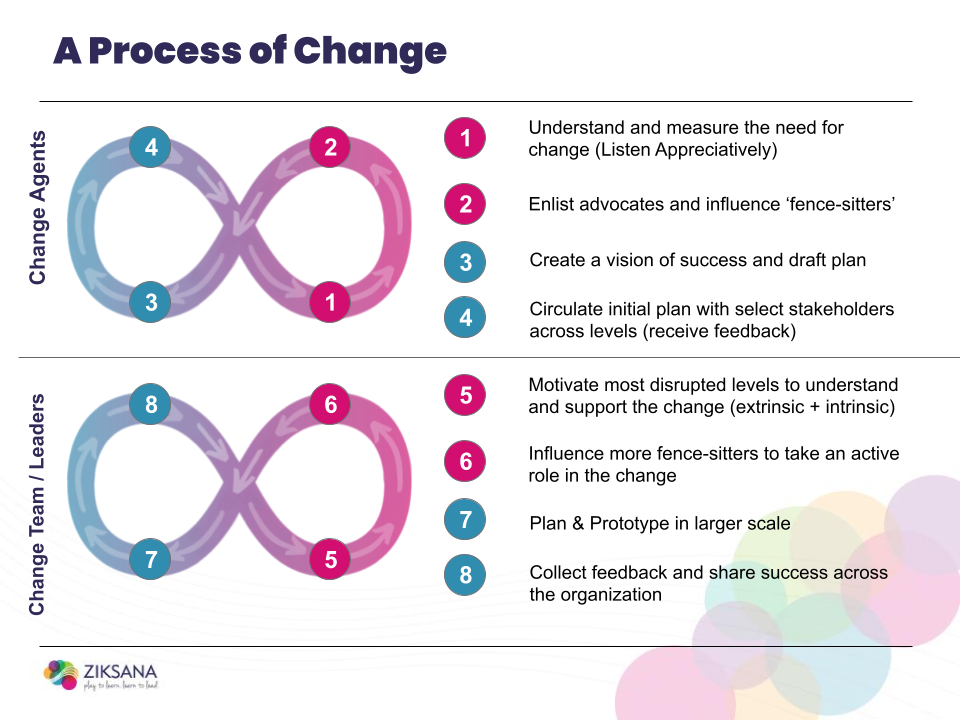When it comes to organizational change, leaders have different priorities and approaches depending on their strengths. According to CliftonStrengths®, focusing on developing people’s strengths at work rather than fixing their weaknesses leads to employees who are more engaged, have a better quality of life, and have more opportunities to do what they are best at every day.
The Strengths-Based approach also encourages the creation of teams with diverse strengths, where roles are assigned based on individuals’ primary strengths. In the context of organizational change, we recommend this strengths-based strategy to assign the right people to the right part of the change process.
The Organizational Change Challenge
Leaders sometimes have the tendency to overuse their strengths, attempting to lead and manage every aspect of changing organizational culture. We view Organizational Change as a cyclical process that alternates between focusing on results and people, requiring different strengths at different times – and adaptive leadership. Leaders who try to facilitate all cycles with their strengths alone can quickly get stuck.
For example, a leader with strong influencing strengths may shine when it’s time to build a core team of change advocates at the beginning of the first cycle but may struggle to adequately listen to and integrate critical feedback from stakeholders before moving into the second cycle.
As a general rule of thumb, leaders with primarily Relationship and Influencing strengths will perform best on the tasks indicated on the right side of the loop, while leaders with Executing and Strategic strengths will perform best on the left side. Leaders with strengths on both sides of the loop will perform best when they are aware and strategic about which strengths they are relying on at which part of the process.

The Solution: Leading From Your Strengths
Changing Organizational Culture Requires the Right People for the Right Part of the Process
In order to successfully facilitate organizational change, leaders need to develop a core team that is representative of all 4 strength domains. Then, roles should be assigned based on what each domain is best at, with each person feeling empowered to lead their part of the process. By empowering teams, the creative leaders behind them avoid the tendency to lead the entire process single-handedly, instead trusting those with better-suited strengths to lead the parts where they shine.
- Relationship Strengths shine when they are utilized to understand other people’s perspectives, feelings, and feedback. They innately engage in techniques like appreciative listening and teams feel a sense of psychological safety around them. Leaders with primarily relationship strengths are key players at the beginning of the organizational change process and should be tasked with interviewing key stakeholders to assess the need for change. Relationship strengths should also be tasked with collecting feedback throughout the change process, as they are likely to listen empathetically and consider the impact of change on relationships, not just results.
- Strategic Strengths are key during the visioning and planning process. Once stakeholders’ perspectives have been taken into consideration, leaders with strategic strengths should be tasked with creating an initial vision for success and coming up with different ideas of how to get there. Strategic Strengths should be given the lead anytime during the change process when planning and ideation are necessary.
- Influencing Strengths will shine when it’s time to get people on board with a plan. Their persuasive and engaging way of interacting will help motivate those people who are on-the-fence about change to advocate for it. Utilize leaders with influencing strengths whenever it’s time to present a plan or address resistance to change. In the latter situation, pairing those with influencing and relationship strengths is a good strategy to ensure that resistors feel both understood and inspired to get on board.
- Executing Strengths make things happen! Leaders with executing strengths should be in charge of project management, setting deadlines, and keeping people on track at every step of the organizational change process. Whenever it’s time to take action and implement a plan, those with executing strengths should be trusted with the lead.
Ultimately, a strengths-based approach to leading change requires effective leadership responsibilities to be shared and delegated. Each member of the leadership team should own the parts of the process they’re best at, knowing when it’s time to pass the baton to someone with better-suited strengths. This approach ensures a focus on both results and people is maintained throughout the change process, leading to successful change initiatives that support a healthy culture and bottom line.















